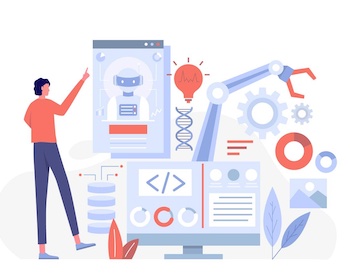
Service Transformation through Artificial Intelligence at the United States Department of Veterans Affairs

Guest Author: Ross Autry, Strategic Partnership Executive - US Federal Consulting, IBM
Artificial Intelligence has captured popular attention in a period of general availability and growing awareness of its seemingly inexhaustible utility. The sudden, societal-level excitement related to AI has emerged alongside an atmosphere of tempered pragmatism concerning its application and the role of humans with emerging technologies. Enterprises across the public and private sectors continue to weigh the ramifications of AI in practice for their impacted workforce and customers.
At the same time, the sophistication of information systems overlayed with the rigidity of bureaucratic processes caused the procedural elements of some government agency functions to grow in the early 21st century. Processing beneficiary claims within federal agencies and successfully delivering benefits became more burdensome on the substantial government workforce that supports these functions. Despite myriad global challenges during the early 2020’s, these years have produced remarkable progress in the fields of public policy and information processing. These developments offer institutions the ability to remove constraints embedded in legacy information technology systems.
The Veterans Benefits Administration within the US Department of Veterans Affairs is responsible for the administration of pensions, survivors' benefits, rehabilitation, and education assistance to veterans and their families. An illustration of circumstances that can benefit from advanced information processing presented at VBA comes from the evolving research related to toxic burn pits and their long-term medical effects on servicemen. Toxic burn pits, as the name suggests, are trenches created by servicemen during combat for the disposal and burning of waste. The resulting illnesses caused by exposure to toxic burn pits can fester in an individual serviceman for many years before physical symptoms appear. As associated maladies and awareness of the long-term health complications related to fumes from burn pits increased, the VA had to alter their processes to address a growing concern amongst veterans served.
Legislative action to address capacity to serve veterans was successful. On August 10th, 2022, the Sergeant First Class (SFC) Heath Robinson Honoring Our Promise to Address Comprehensive Toxics (PACT) Act was signed into law by President Biden. This legislation represents the greatest expansion of services to veterans in the history of VA, offering advanced screening for associated illnesses and expedited services for eligible claimants.
Annually, VBA receives more than 14 million pieces of written correspondence submitted by current and potential beneficiaries, consisting of more than 1,000 different document types. Submissions from veterans to request these benefits often contain unstructured content within evidentiary documents to substantiate claims. Veterans can be greatly impacted by process inconsistencies and quality errors, creating more time where symptoms are experienced without appropriate benefits. As a result of the volume and breadth of unique information submitted, documentation processing times for medical, financial, and other essential articles grew to five months, impacting the availability of benefits to an often-vulnerable population. VBA’s goal was to dramatically reduce veteran wait times, improve consistency, and free up skilled VA employees to assist veterans in other ways to improve VBA’s delivery of benefits.
As information is extracted and refined, the ability to analyze its contents is expanded through AI. Artificial intelligence serves as a translator of information or, as Walter Benjamin wrote, is “charged with the special mission of watching over the maturing process of the original” so that the present translation will “echo” in its place. New claim validation is expedited by employing massive datasets trained on an evolving body of research related to toxic burn pits and their presence in the history of American conflict. Once analyzed, the resulting information is provided to a VA employee and a physician, who can assess the specific current needs of the beneficiary claimant and make an appropriate diagnosis. As a result, review times for claims processing at VBA have been reduced, in some cases, from five months to five hours.
In the first year of the PACT Act’s existence, the VA delivered more than $1.85 billion in earned PACT Act-related benefits to veterans and their survivors. New individual VA benefit enrollees related to the PACT Act totaled 332,252 in the same timeframe. According to a White House press release, the VA is delivering these benefits to veterans at the fastest rate in history (16% more year-to-date than the previous all-time record).
The Federal government continues to shift in favor of public-private sector collaboration to address gaps in technology services. As a result, government agencies can more adeptly serve the needs of citizens. In the case of the VA, augmenting human review processes with AI can expedite the immediacy of care to the population they serve. The VBA program described above shows the potential for technology to address the needs of citizens.
Image by Freepik



